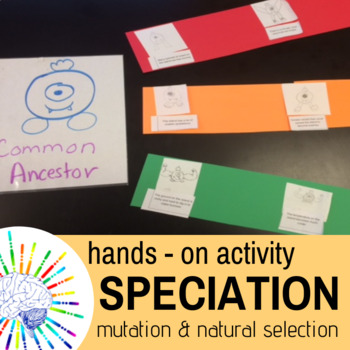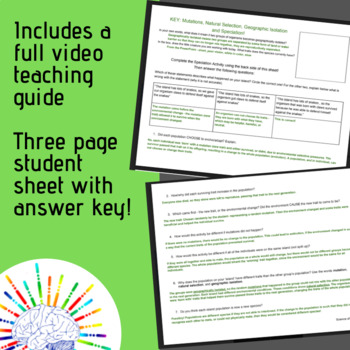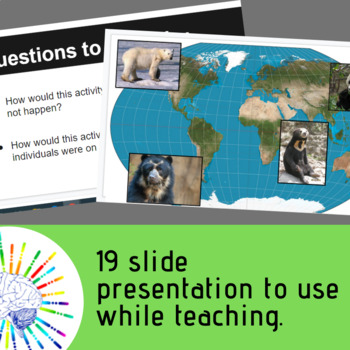Speciation Activity: Students model Mutation, Natural Selection, and Evolution
- PDF
What educators are saying
Description
Students often have trouble with the concepts of Natural Selection and Evolution of a species. Where do new traits come from? Does the environment cause mutations to happen? Or does the mutation come first? How does geographic isolation lead to speciation?
This is a fun, easy, low-prep activity that allows students to experience the process of evolution (speciation) due to random mutation and geographic isolation. Students get a solid understanding of where new traits come from and how changes in the environment can select for different traits. They also experience how evolution is limited to the traits in the population - if no individuals have a trait that aids in survival, extinction is a real possibility!
This resource comes with...
- a full video explanation of the activity
- a Google Slideshow to use with your class - editable!
- an activity sheet
- a three page student sheet
- a full answer key!
Set up time - 10 minutes
Additional materials needed per group:
- four small pieces of scrap (or copy) paper per student in the group
- Tape
- A baggie
Easy and fun!
Looking for other fun, interactive resources for teaching Biology? Here are a few other things from Science of Curiosity!
- History of Life on Earth - DIGITAL and Paper!
- Human Impact on the Environment & How to Fix It! Differentiated Ecology Project
- Biology Review Activity - Evolution by Natural Selection
- Learn and Practice Cladograms - What Did T.rex Taste Like? NO PREP!
Biology Review Dichotomous Keys - Up and Moving Activity!
Some super fun, no tech, no prep review games





